The 111th Field Artillery is currently constituted as a composite battalion consisting of two batteries of 105MM towed artillery and one battery of 155MM towed artillery (M777) unit with a general support/reinforcing mission. It is a unit within the Virginia Army National Guard based in Norfolk, Virginia.
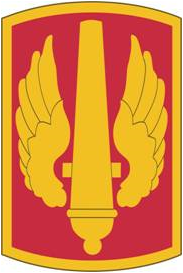
The 18th Field Artillery Brigade is the XVIII Airborne Corps field artillery brigade, based at Fort Liberty, North Carolina.
The 150th Field Artillery Regiment is a field artillery unit in the Indiana Army National Guard.
The 210th Field Artillery Brigade, also known as "the Thunder", is a U.S. Army field artillery brigade forward deployed in the Republic of Korea. Its mission is "On order, 210th Field Artillery Brigade provides fires in support of ACC Operations and Ground Component Commander's (GCC's) counter fire fight. On order, transitions to offensive operations." It provides fire support for Eighth United States Army. The brigade is based at Camp Casey, Republic of Korea and its assets include the M270A1 Multiple Launch Rocket System (MLRS).
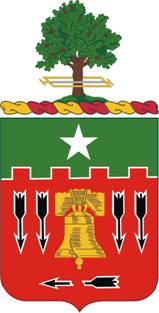
The 5th Field Artillery Regiment was constituted as part of the Regular Army in January 1907. Individual battalions have lineages which date back further. Currently, it is a parent regiment under the U.S. Army Regimental System, with a single active battalion, the 1st Battalion, 5th Field Artillery, which is assigned to the 1st Brigade Combat Team, 1st Infantry Division at Fort Riley, Kansas.
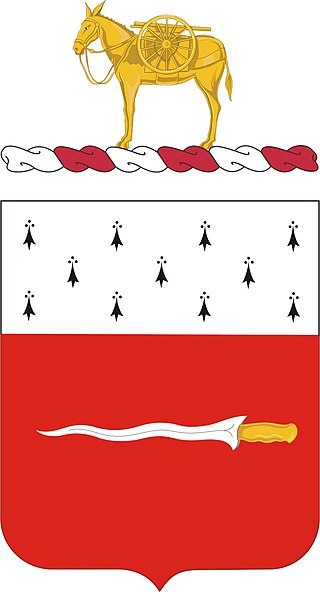
The 2nd Field Artillery Regiment is a field artillery regiment in the United States Army. Currently a parent regiment under the U.S. Army Regimental System, the regiment has a single active battalion, the 2nd Battalion, 2nd Field Artillery, assigned to the 428th Field Artillery Brigade at the U.S. Army Field Artillery, Fort Sill, OK. Their long history is currently represented by the 2nd Field Artillery Mascots

The 2nd Battalion, 1st Air Defense Artillery Regiment is a battalion in the 1st Air Defense Artillery Regiment, a regiment in the United States Army, first formed in 1812, and based in South Korea.
The 3rd Field Artillery Regiment is a field artillery regiment of the United States Army, first formed in 1812, although regimental units trace their lineages as far back as 1794. Based on the service of these antecedents, the regiment claims battle honors for the War of 1812, the Seminole campaign, the Mexican War, the Civil War, the Spanish–American War, and the Philippine Insurrection. The regiment served with the 6th Division during World War I, with the 5th Division, 6th Division and 2d Cavalry Division between the world wars, and with the 9th Armored Division during and after World War II. Since 1961, the regiment has been a parent regiment under the Combat Arms Regimental System and the U.S. Army Regimental System, with regimental elements serving with the 1st, 6th, and 8th Infantry Divisions; 2nd and 3rd Armored Divisions; 1st Cavalry Division; 194th Armored Brigade; and various field artillery brigades and groups. Three regimental battalions are currently active: the 2nd Battalion in the 1st Armored Division and the 1st Battalion and 5th Battalion, both a part of the 17th Field Artillery Brigade.

The 6th Field Artillery Regiment is a Field Artillery Branch regiment of the United States Army first activated in 1907 from numbered companies of artillery. It was first organized with two battalions.
The 9th Field Artillery Regiment is a field artillery regiment of the United States Army first formed in 1916. The regiment served in Hawaii during World War I, 3rd, 4th, 7th, and 9th Divisions between the world wars, and with 3rd Infantry Division during World War II and Korea. Since 1957, the regiment has been a parent regiment under the Combat Arms Regimental System and the U.S. Army Regimental System, with regimental elements serving with the 3rd, 4th, 10th, 25th, 79th, 83rd, and 96th Infantry Divisions and various field artillery brigades and groups. The regiment's single active component, the 1st Battalion, 9th Field Artillery Regiment, is assigned to the 2nd Brigade Combat Team, 3rd Infantry Division and stationed at Fort Stewart, Georgia.

The 25th Field Artillery Regiment is a field artillery regiment of the United States Army, first constituted 5 July 1918 in the National Army (USA). Although the regiment did not see action during World War I, elements participated in World War II, Vietnam, Panama, the Gulf War, and the Global War on Terrorism. Currently the regiment one active battalion, a towed light artillery units equipped with the M119A3 105 mm howitzer and the M777A2 155 mm howitzer. The 5th Battalion is assigned to the 3rd Brigade Combat Team, 10th Mountain Division at Fort Johnson, Louisiana. The 4th Battalion was inactivated on 14 August 2014.
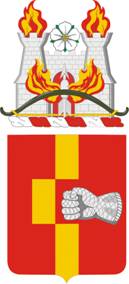
The 92nd Field Artillery Regiment is an inactive parent regiment of the Field Artillery Branch of the United States Army. It was constituted in 1933, with its last active battalions, the 1st and 3rd Battalions, inactivated in 1996.
The 377th Field Artillery Regiment is a field artillery regiment of the United States Army. A parent regiment under the U.S. Army Regimental System, the regiment's 2nd Battalion, 377th Field Artillery Regiment is assigned to the 2nd Infantry Brigade Combat Team (Airborne), 11th Airborne Division. Elements of the regiment have also served with the 101st Airborne Division and 82nd Airborne Division, and have seen service in World War II, Vietnam, and in both Iraq and Afghanistan during the Global War on Terror. The 1st and 3rd Battalions as well as Batteries D and E are Inactive.

The 112th Field Artillery Regiment is a Field Artillery Branch regiment of the New Jersey Army National Guard first formed in April 1917. In December 1941, it was the last field artillery regiment in the U.S. Army to convert from horse-drawn to truck-drawn howitzers.
The 2nd Battalion, 8th Field Artillery Regiment is the field artillery battalion organic to the 1st Infantry Brigade Combat Team, 11th Airborne Division. Originally organized in 1916, the battalion has seen combat service in World War I, World War II, Korea, and the Global War On Terror. Most recently deploying to Iraq in support of Operation Inherent Resolve. The Automatic Battalion has earned, 14 campaign streamers and at least 8 unit awards. The battalion is currently at Fort Wainwright, Alaska.

The 2nd Infantry Division Artillery (DIVARTY) or "Warrior Strike" is the Force Field Artillery Headquarters for the 2nd Infantry Division. The DIVARTY served with the division from 1917 to present, including combat service in World War I, World War II, and the Korean War. In addition to peacetime service with the division at Fort Lewis, Washington, Fort Benning, Georgia, and in Japan and Alaska, the DIVARTY spent 40 years in Korea. After seven years stationed at Joint Base Lewis–McChord, where the DIVARTY provided fire support coordination and mission command for the training and readiness of five field artillery battalions, the Army restationed the DIVARTY to Camp Humphreys on 16 September 2021.
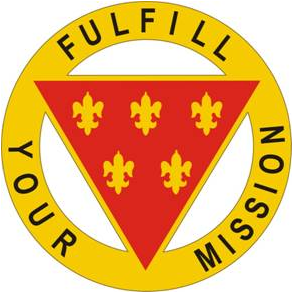
The 3rd Infantry Division Artillery (DIVARTY) is the divisional artillery command for the 3rd Infantry Division at Fort Stewart, Georgia. The DIVARTY has served with the division in World Wars I and II, the Korean War, Operation Iraqi Freedom, and in peacetime at Fort Stewart and Germany. The DIVARTY was inactivated in 2004 as part of transformation to modular brigade combat teams, but was reactivated on 17 October 2014 to provide fire support coordination and mission command for the training and readiness of Field Artillery units across the division.

The 2nd Battalion, 3rd Field Artillery Regiment is an artillery unit of the United States Army. The battalion traces its lineage to 1812, and it is currently assigned to the 1st Brigade Combat Team, 1st Armored Division. The battalion has served in the Seminole Wars, the Civil War, the Spanish–American War, World War I, World War II, Operations Desert Shield and Desert Storm, Operation Iraqi Freedom, and Operation Enduring Freedom.

The 1st Battalion, 321st Field Artillery Regiment is an inactive field artillery battalion of the United States Army. The battalion served in World War I, World War II, Vietnam and the Global War on Terror with the 82nd Airborne and 101st Airborne Divisions, and with the 18th Field Artillery Brigade. The battalion was officially inactivated in March 2014, and its firing batteries were distributed throughout the 82nd Airborne Division.
The 2nd Battalion, 2nd Field Artillery Regiment is the United States Army’s Direct Support field artillery battalion; assigned to the 428th Field Artillery Brigade and stationed at Fort Sill, OK. Founded in 1775 as the Second Artillery Regiment, the Battalion now carries the lineage of the 18th Battery, Artillery Corps, and carries campaign credit for the Philippine Insurrection, World War I, and World War II.













